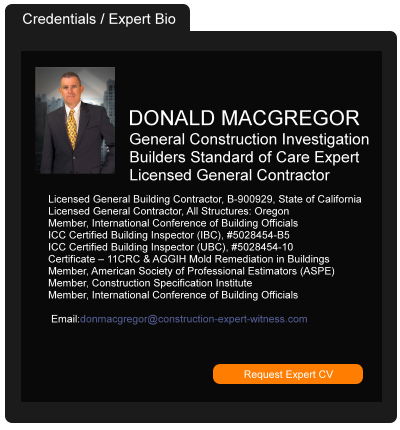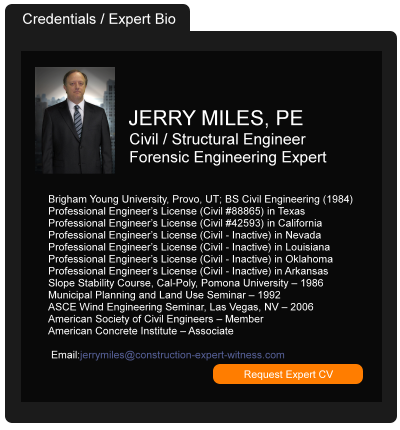Contractors and Owners Will Have an Easier Time Identifying Regulated Wetlands Following Recent U.S. Supreme Court Opinion
August 01, 2023 —
David Scriven-Young - ConsensusDocsContractors appreciate how difficult it often is on a technical level to perform work in or near wetlands or other environmentally sensitive areas. Such work is even more difficult due to the complex, and ever-changing regulations issued by the United States Environmental Protection Agency (“EPA”) under the Clean Water Act (“CWA”). The CWA applies to “navigable waters”, which are defined as “the waters of the United States.” To determine whether certain wetlands are in fact “the waters of the United States”, contractors and owners have had to engage in a fact-intensive “significant-nexus” determination dependent upon a lengthy list of hydrological and ecological factors found in the regulations. Recently, the U.S. Supreme Court struck down the applicability of those regulations and instituted a simpler test to determine whether wetlands on an owner’s property fall within them.
In
Sackett v. EPA, the Sacketts purchased property near a lake in Idaho. In preparation for building a home, they began backfilling the site with dirt and rocks. A few months later, the EPA sent the Sacketts a compliance order informing them that their backfilling violated the CWA because their property was part of protected wetlands. The EPA demanded that the Sacketts immediately undertake activities to restore the site and threatened the Sacketts with penalties of over $40,000 per day if they did not comply. According to the EPA, the wetlands on the Sacketts’ lot fell under the jurisdiction of the CWA because they were “adjacent to” (i.e., in the same neighborhood as) an unnamed tributary on the other side of a 30-foot road, which fed into the nearby lake. The EPA concluded that the Sacketts’ wetlands, when considered together with a large nearby wetland complex, significantly affected the ecology of the lake. Thus, the EPA charged that the Sacketts had illegally dumped soil and gravel into “the waters of the United States.”
Read the court decisionRead the full story...Reprinted courtesy of
David Scriven-Young, Peckar & Abramson PCMr. Scriven-Young may be contacted at
dscriven-young@pecklaw.com
Courthouse Reporter Series: Louisiana Supreme Court Holds Architect Has No Duty to Safeguard Third Parties Against Injury, Regardless of Knowledge of Dangerous Conditions on the Project
July 31, 2024 —
Stu Richeson - The Dispute ResolverIn Bonilla v. Verges Rome Architects, 2023-00928 (La. 3/22/24); 382 So.3d 62, the Louisiana Supreme Court held because the terms of the agreement between the architect and the public owner did not give the architect responsibility for the means and methods of construction or for safety on the project, the architect did not have a duty to safeguard third parties against injury, regardless of whether the architect may have had knowledge of dangerous conditions on the project.
In Bonilla, the City of New Orleans entered into a contract for the renovation of a building owned by the city. The city also entered into an agreement with Verges Rome Architects (“VRA”) to serve as the project architect. The general contractor on the project subcontracted the demolition work to Meza Services, Inc. (“Meza”).
An employee of Meza was injured while attempting to demolish a “vault” on the project. The vault was a ten-foot by ten-foot cinderblock room with a nine-foot-high concrete slab ceiling located on the second floor of the building. The walls of the vault had been partially demolished when one of the employees of Meza was directed by his supervisor to stand on the ceiling of the vault with a jackhammer to continue the demolition. Shortly after beginning the task, the vault structure collapsed and caused the employee to suffer significant injury.
Read the court decisionRead the full story...Reprinted courtesy of
Stu Richeson, PhelpsMr. Richeson may be contacted at
stuart.richeson@phelps.com
OH Supreme Court Rules Against General Contractor in Construction Defect Coverage Dispute
October 30, 2018 —
Theresa A. Guertin - Saxe Doernberger & Vita, P.C.On October 9, 2018, the Ohio Supreme Court issued a decision in Ohio Northern University v. Charles Construction Services, Inc., Slip Op. 2018-Ohio-4057, finding that a general contractor was not entitled to defense or indemnity from its CGL insurer in a construction defect suit brought by a project owner post-project completion. With this decision, Ohio has solidified its place amongst a diminishing number of states, including Pennsylvania and Kentucky, which hold that there is no coverage for defective construction claims because those losses do not present the level of fortuity required to trigger CGL coverage. This places Ohio amongst the worst in the country on this issue at a time when numerous states have abandoned old precedent and moved towards a policyholder friendly analysis.
Ohio Northern University (“ONU”) hired Charles Construction Services, Inc. (“CCS”) to construct the University Inn and Conference Center, a new hotel and conference center on their campus in Ada, Ohio. CCS purchased CGL insurance from Cincinnati Insurance Company (“CIC”) insuring the project. Following completion of the project, ONU sued CCS alleging defects in the construction of the completed project, including allegations that windows improperly installed by one subcontractor led to damage to walls built by another subcontractor. CIC agreed to defend CCS under a reservation of rights but intervened in the action between ONU and CCS to pursue a declaratory judgment that it had no obligation to defend or indemnify its insured for the alleged losses.
Read the court decisionRead the full story...Reprinted courtesy of
Theresa A. Guertin, Saxe Doernberger & Vita, P.C.Ms. Guertin may be contacted at
tag@sdvlaw.com
Anatomy of an Indemnity Provision
January 28, 2015 —
Garret Murai – California Construction Law BlogIndemnity clauses are one of the most negotiated (and litigated) provisions in a construction contract.
They are also one of the most least understood.
But we’re here to dissect it for you, so to speak.
What is an indemnity clause?
An indemnity clause is simply a risk transfer provision that seeks to transfer risk from one party to another party.
Read the court decisionRead the full story...Reprinted courtesy of
Garret Murai, Wendel Rosen Black & Dean LLPMr. Murai may be contacted at
gmurai@wendel.com
Preliminary Notice Is More Important Than Ever During COVID-19
June 01, 2020 —
Christopher G. Hill - Construction Law MusingsFor this week’s Guest Post Friday here at Construction Law Musings, we welcome Justin Gitelman. Justin is the Content Coordinator at Levelset, where over 500,000 contractors and suppliers connect on a cloud-based platform to make payment processes stress-free. Levelset helps contractors and suppliers get payment under control, and sees a world where no one loses a night’s sleep over payment.
As the construction industry continues to adjust to the coronavirus and an uncertain future, contractors are struggling to get paid. During the COVID-19 pandemic, construction businesses across Virginia need to do everything they can to protect their payments, and get paid faster. One simple action that can help fight payment delays: sending preliminary notice on every job.
Subcontractors and suppliers should send preliminary notices out to the GC, project owner, and/or lender at the start of every single project. These tools allow contractors to make themselves visible on crowded job sites, helping contractors get paid more quickly, and, in some cases, securing their right to file a mechanics lien or bond claim.
Preliminary Notices in Construction
The purpose of a preliminary notice is to allow each member of a construction project to know who you are and what work you’ll be performing. With coronavirus in mind, contractors can use preliminary notices to remind the hiring party of their payment expectations. When you submit a preliminary notice on every project, you’ll have legal protection in your corner while also giving yourself a greater opportunity to get paid.
Read the court decisionRead the full story...Reprinted courtesy of
The Law Office of Christopher G. HillMr. Hill may be contacted at
chrissghill@constructionlawva.com
Construction Law Firm Welin, O'Shaughnessy + Scheaf Merging with McDonald Hopkins LLC
February 05, 2014 —
Beverley BevenFlorez-CDJ STAFFAccording to a press release on PR Newswire, Columbus, Ohio law firm McDonalds Hopkins LLC is merging with firm Welin, O’Shaughnessy + Scheaf. McDonalds Hopkins LLC is “a business advisory and advocacy law firm with a more than 80-year history.” They are looking to expand their “Columbus presence” by the merger with “the boutique firm” that specializes in construction law, complex business litigation and oil and gas litigation.
Read the court decisionRead the full story...Reprinted courtesy of
Connecticut Court Clarifies Construction Coverage
June 28, 2013 —
CDJ STAFFThe Connecticut Supreme Court has recently ruled on a case in which breach of contract and bad-faith claims were made against an insurer in an construction defect case. Joseph K. Scully of Day Pitney LLP discussed the case in a piece on Mondaq.
Mr. Scully noted that the background of the case was that Capstone Building was the general contractor and project developer of a student housing complex for the University of Connecticut. Unfortunately, the building had a variety of problems, some of which were violations of the building code. Mr. Scully noted that the building had “elevated carbon monoxide levels resulting from inadequate venting, improperly sized flues.” Capstone entered into mediation with the University of Connecticut. Capstone’s insurer, the American Motorists Insurance Company (AMICO), declined involvement in the participation. Afterward, Capstone sued AMICO. The issues the court covered involved the insurance on this project.
The court addressed three questions. The first was “whether damage to a construction project caused by construction defects and faulty workmanship may constitute ‘property damage’ resulting from an ‘occurrence.’” The court concluded that it could “only if it involved physical injury or loss of use of ‘nondefective property.’”
The second question dealt with whether insurers were obligated to investigate insurance claims. The court, “agreeing with the majority of jurisdictions,” did not find “a cause of action based solely on an insurer’s failure to investigate a claim.” Under the terms of the contract, it was up to AMICO to decide if it was going to investigate the claim.
Thirdly, the court examined whether “an insured is entitled to recover the full amount of a pre-suit settlement involving both covered and noncovered claims after an insurer wrongfully disclaims coverage.” The court concluded that the limits are that the settlement be reasonable, the policy limit, and the covered claims.
Mr. Scully concludes that the decision will limit “the scope of coverage for construction defect claims” and “also imposes reasonable requirements on an insured to allocate a settlement between covered and noncovered claims.
Read the court decisionRead the full story...Reprinted courtesy of
How the Election Could Affect the Housing Industry: Steven Cvitanovic Authors Construction Today Article
October 07, 2016 —
Steven M. Cvitanovic – Haight Brown & Bonesteel LLPThough non-policy issues dominating the news cycle have set this presidential election apart, both Hillary Clinton and Donald Trump have recognized the importance of housing and infrastructure investment. In an article for Construction Today, Partner Steven Cvitanovic outlines several challenges facing the real estate development industry, and analyzes how Clinton and Trump might benefit or harm the industry.
Read the court decisionRead the full story...Reprinted courtesy of
Steven M. Cvitanovic, Haight Brown & Bonesteel LLPMr. Cvitanovic may be contacted at
scvitanovic@hbblaw.com


































































